Tapered Polymer Fiber Sensors for Reinforced Concrete Beam Vibration Detection
Abstract
:1. Introduction
2. Sensing Principle and Beam Analysis
2.1. Sensing Principle
2.2. Beam Analysis
3. Experimental Materials and Methods
3.1. Sensor Probe Fabrication and Installations
3.2. Reinforced Concrete Beam Specimen
3.3. TPFS Multiplexing System
3.4. Vibration Monitoring System
4. Results and Discussion
4.1. Calibration the TPFS
4.2. Comparison the Performances on the RC Beam
4.3. Vibration Detection of RC Beam
5. Conclusions
Acknowledgments
Author Contributions
Conflicts of Interest
References
- Bocca, M.; Eriksson, L.M.; Mahmood, A.; Jäntti, R.; Kullaa, J. A synchronized wireless sensor network for experimental modal analysis in structural health monitoring. Comput.-Aided Civ. Infrastruct. Eng. 2011, 26, 483–499. [Google Scholar] [CrossRef]
- Yang, H.; Qiao, X.; Ali, M.M.; Islam, M.R.; Lim, K. Optimized tapered optical fiber for ethanol (C2H5OH) concentration sensing. IEEE J. Lightwave Technol. 2014, 32, 1777–1783. [Google Scholar] [CrossRef]
- Hang, Z.Y.; Xue, G.Q.; Yu, P.W.; Ali, M.M.; Man, H.L.; Kok, S.L.; Harith, A. In-fiber gratings for simultaneous monitoring temperature and strain in ultra-high temperature. IEEE Photonics Technol. Lett. 2015, 27, 58–61. [Google Scholar]
- Yang, H.; Qiao, X.; Luo, D.; Lim, K.; Chong, W.; Sulaiman, W. A Review of Recent Developed and Applications of Plastic Fiber Optic Displacement Sensors. Measurement 2014, 48, 333–345. [Google Scholar] [CrossRef]
- Dong, L.; Ismail, Z.; Ibrahim, Z. Added advantages in using a fiber Bragg grating sensor in the determination of early age setting time for cement pastes. Measurement 2013, 46, 4313–4320. [Google Scholar]
- Hang, Z.Y.; Xue, G.Q.; Das, S.; Mukul, C.P. Thermal regenerated grating operation at temperature up to 1400 °C using new class of multimaterial glass based photosensitive fiber. Opt. Lett. 2014, 39, 6438–6441. [Google Scholar]
- Owolabi, G.M.; Swamidas, A.S.J.; Seshadri, R. Crack detection in beams using changes in frequencies and amplitudes of frequency response functions. J. Sound Vib. 2003, 265, 1–22. [Google Scholar] [CrossRef]
- Escalante-García, J.; Sharp, J. The microstructure and mechanical properties of blended cements hydrated at various temperatures. Cem. Concr. Res. 2001, 31, 695–702. [Google Scholar] [CrossRef]
- Luo, D.; Yue, Y.; Li, P.; Ma, J.; Zhang, L.L.; Ibrahim, Z.; Ismail, Z. Concrete beam crack detection using tapered polymer optical fiber sensors. Measurement 2016, 88, 96–103. [Google Scholar] [CrossRef]
- Davis, M.; Kersey, A.; Sirkis, J.; Friebele, E. Shape and vibration mode sensing using a fiber optic Bragg grating array. Smart Mater. Struct. 1999, 5, 759. [Google Scholar] [CrossRef]
- Yang, H.Z.; Harun, S.W.; Arof, H.; Ahmad, H. Environment-independent liquid level sensing based on fiber-optic displacement sensors. Microw. Opt. Technol. Lett. 2011, 53, 2451–2453. [Google Scholar] [CrossRef]
- Ling, H.Y.; Lau, K.T.; Cheng, L. Determination of dynamic strain profile and delamination detection of composite structures using embedded multiplexed fiber-optic sensors. Compos. Struct. 2004, 66, 317–326. [Google Scholar] [CrossRef]
- Ismail, Z.; Ibrahim, Z.; Ong, Z.C.; Rahman, A.G.A. Approach to Reduce the Limitations of Modal Identification in Damage Detection Using Limited Field Data for Nondestructive Structural Health Monitoring of a Cable-Stayed Concrete Bridge. J. Bridge Eng. 2012, 17, 867–875. [Google Scholar] [CrossRef]
- Ismail, Z.; Ong, Z.C. Honeycomb damage detection in a reinforced concrete beam using frequency mode shape regression. Measurement 2012, 45, 950–959. [Google Scholar] [CrossRef]
- Rahman, A.G.A.; Ong, Z.C.; Ismail, Z. Enhancement of coherence functions using time signals in Modal Analysis. Measurement 2011, 44, 2112–2123. [Google Scholar] [CrossRef]
- Rahman, A.G.A.; Ong, Z.C.; Ismail, Z. Determination of Damage Severity on Rotor Shaft Due to Crack Using Damage Index Derived from Experimental Modal Data. Exp. Tech. 2014, 38, 18–30. [Google Scholar]
- Mueller, U.C.; Zeh, T.; Mueller, M.S.; Koch, A.W. Vibration and Shape Control in Opto-Mechanical Systems Using Distributed Fiber-Optic Bragg Grating Sensors. J. Vib. Control 2010, 16, 555–570. [Google Scholar] [CrossRef]
- Kuang, K.; Cantwell, W.; Thomas, C. Crack detection and vertical deflection monitoring in concrete beams using plastic optical fiber sensors. Meas. Sci. Technol. 2003, 14, 205. [Google Scholar] [CrossRef]
- Dong, L.; Ibrahim, Z.; Bin, X.; Ismail, Z. Optimization of the Geometries of Biconical Tapered Fibre Sensors for Early-age Curing Temperature Monitoring of Concrete Specimens. Comput.-Aided Civ. Infrastruct. Eng. 2013, 28, 531–541. [Google Scholar]
- Kuang, K.; Cantwell, W. The use of plastic optical fibers and shape memory alloys for damage assessment and damping control in composite materials. Meas. Sci. Technol. 2003, 14, 1305. [Google Scholar] [CrossRef]
- Kuang, K.; Quek, S.; Cantwell, W. Use of polymer-based sensors for monitoring the static and dynamic response of a cantilever composite beam. J. Mater. Sci. 2004, 39, 3839–3843. [Google Scholar] [CrossRef]
- Lim, K.S.; Yang, H.Z.; Becir, A.; Lai, M.H.; Ali, M.M.; Qiao, X.; Ahmad, H. Spectral analysis of bent fiber Bragg gratings: Theory and experiment. Opt. Lett. 2013, 38, 4409–4412. [Google Scholar] [CrossRef] [PubMed]
- Sun, K.; Kapoor, R. Optimum taper length for maximum fluorescence signal from an evanescent wave fiber optic biosensor. Proc. SPIE 2008, 6852. [Google Scholar] [CrossRef]
- Thomson, W. Theory of Vibrations with Applications; Prentice Hall: Englewood Cliffs, NJ, USA, 1993. [Google Scholar]
- Cyr, M.; Tagnit-Hamou, A. Particle size distribution of fine powders by LASER diffraction spectrometry. Case of cementitious materials. Mater. Struct. 2001, 34, 342–350. [Google Scholar] [CrossRef]
- Dong, L.; Ibrahim, Z.; Yang, H.; Ismail, Z. Use of tapered optical fiber sensors in study of the hydration process of cement paste. IEEE Sens. J. 2013, 13, 3415–3420. [Google Scholar]
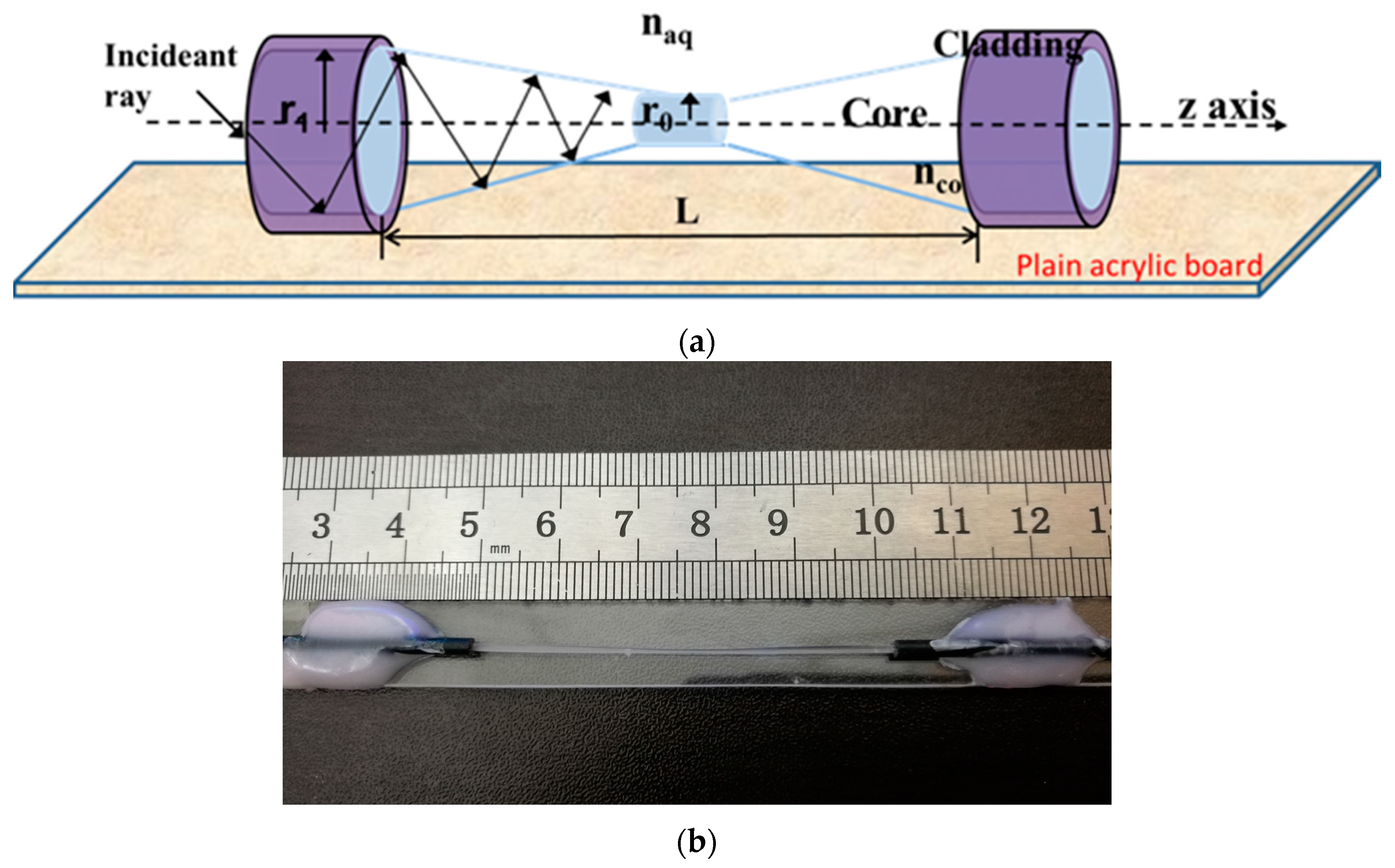
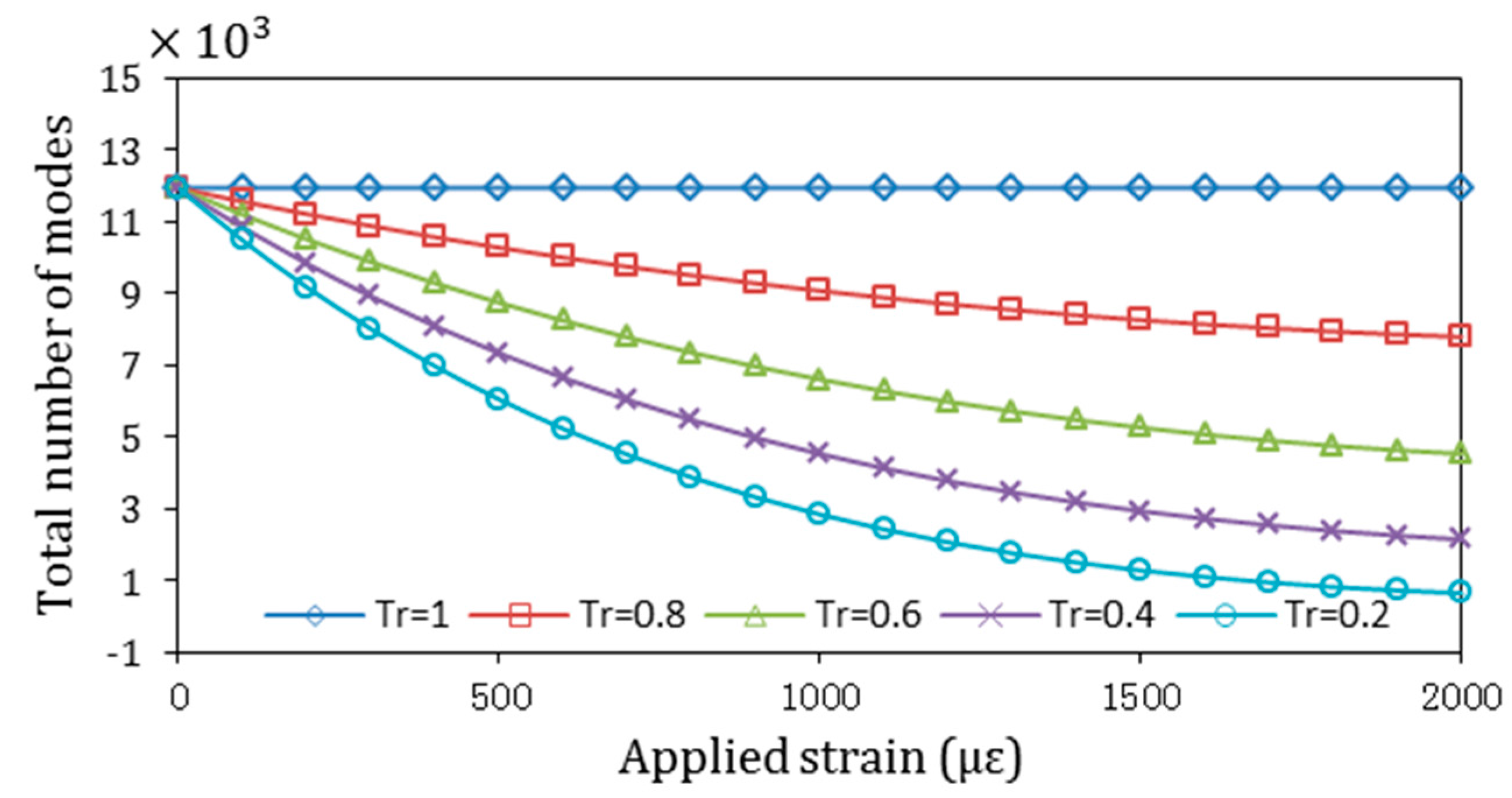


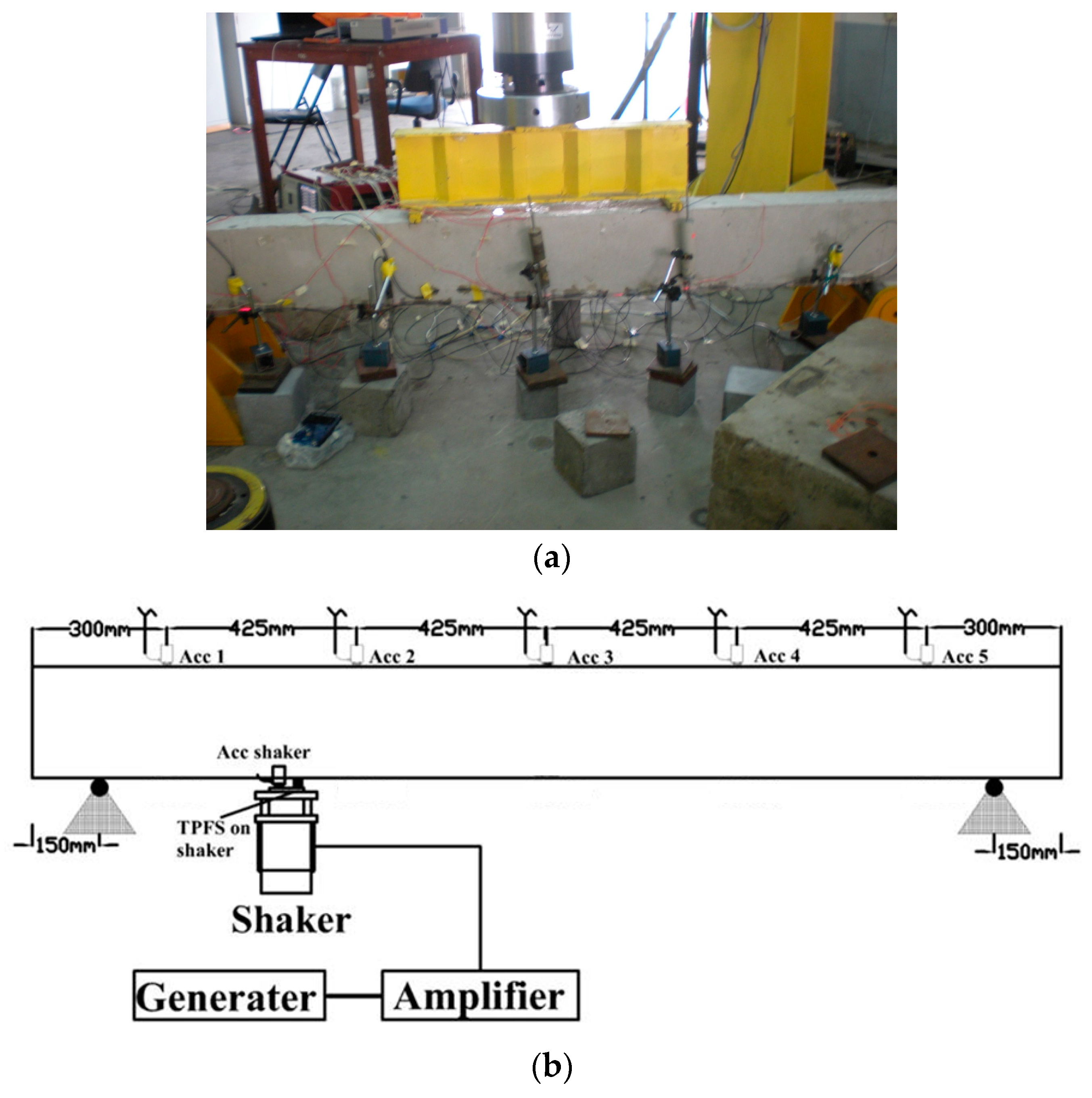
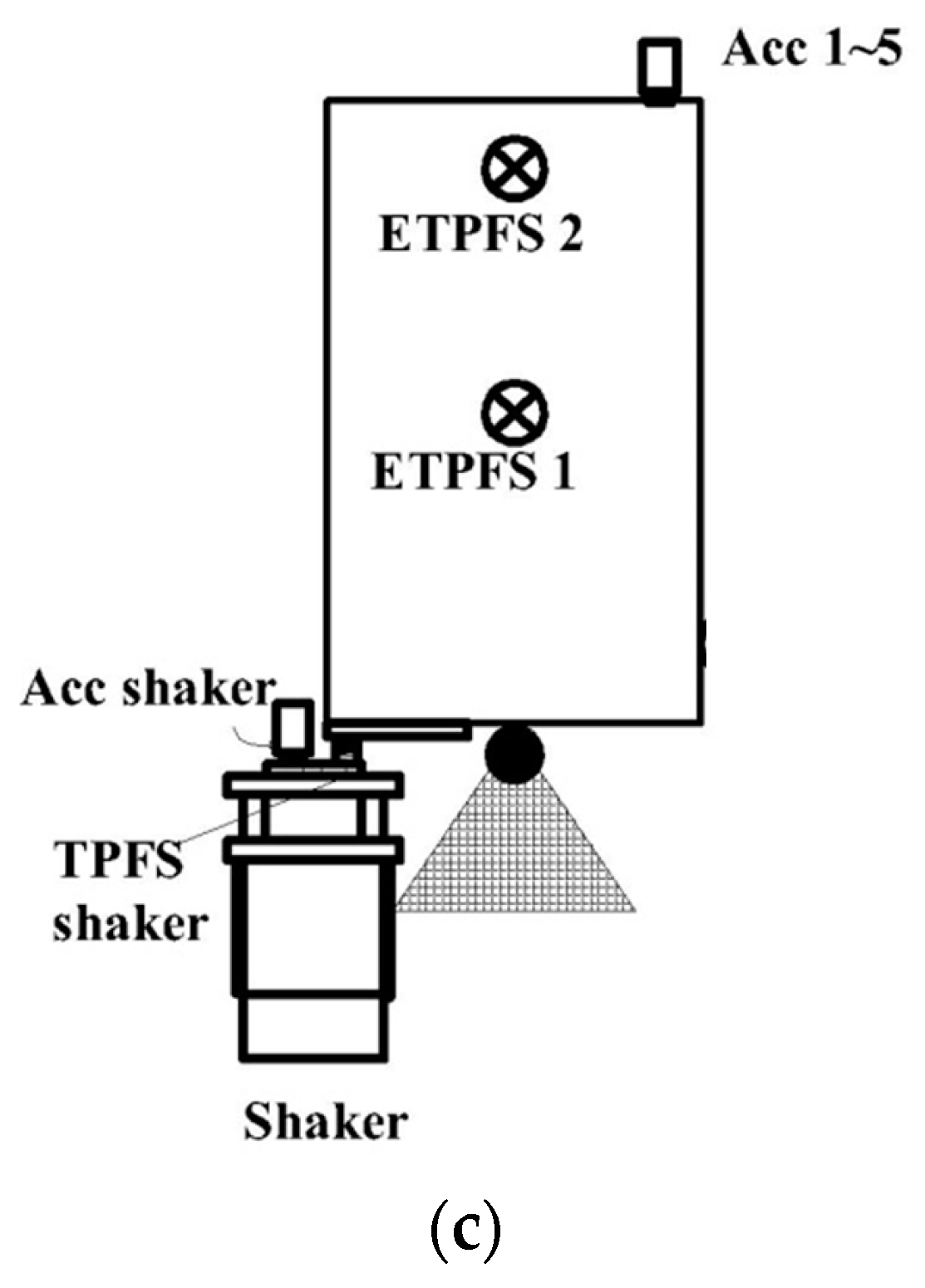



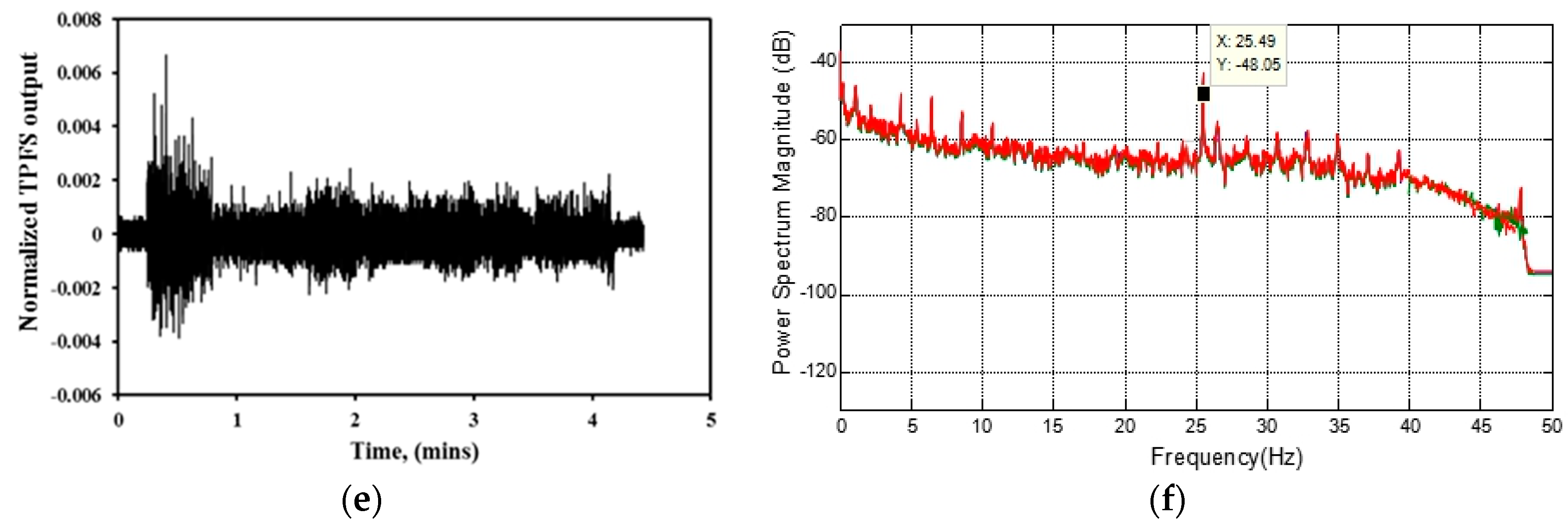
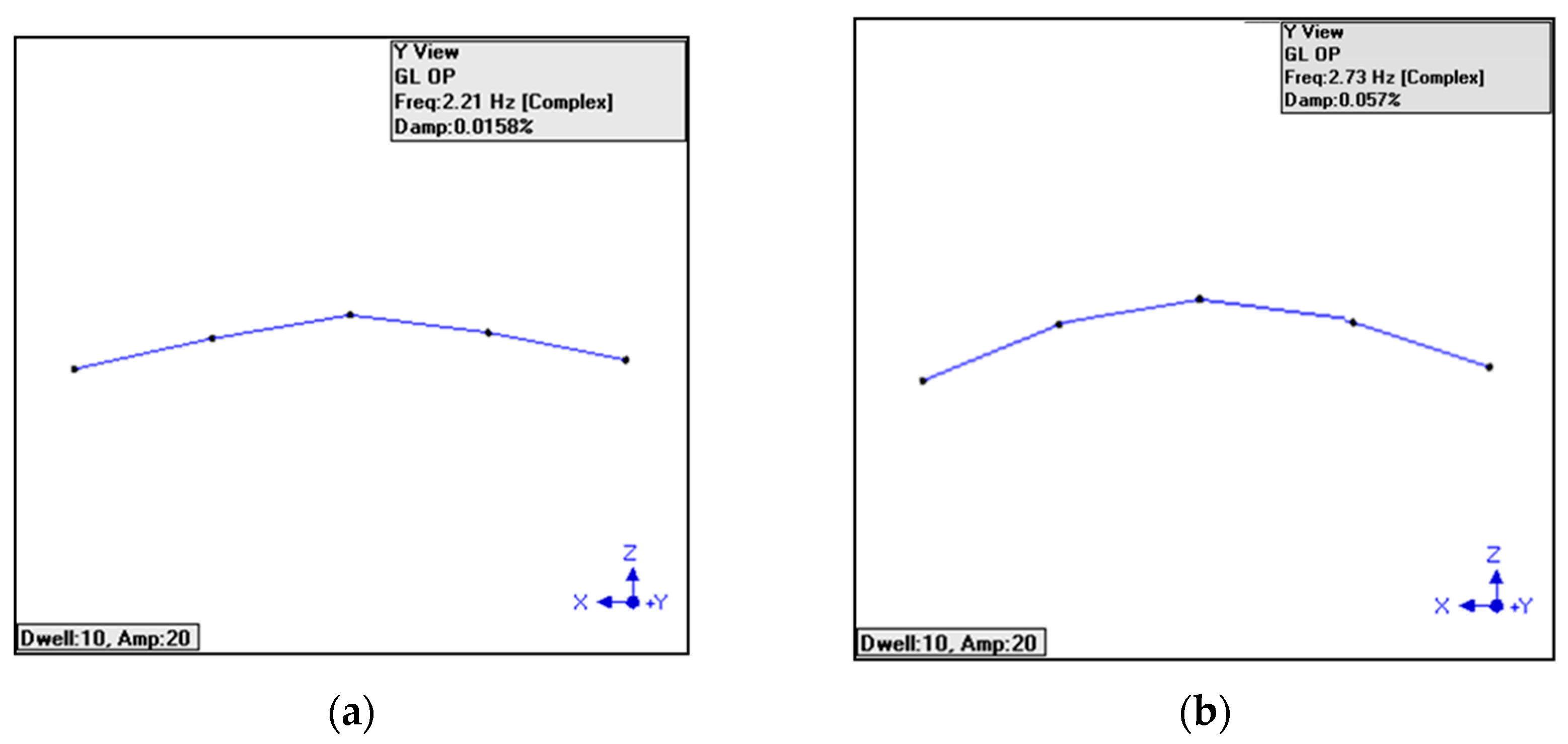
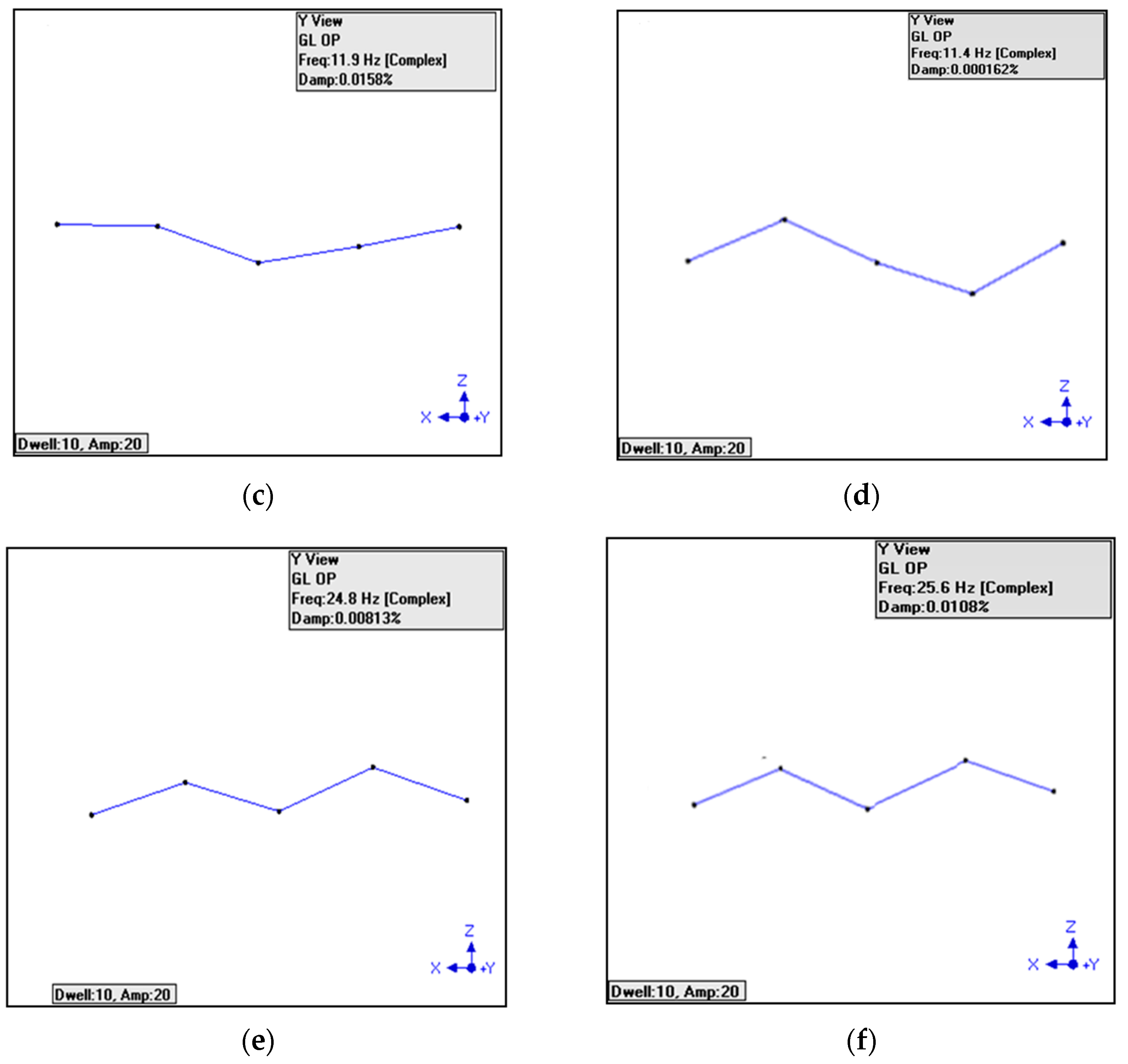
| Materials per m3 | Ordinary Portland Cement (OPC) (kg) | Water (kg) | Coarse Aggregate (kg) | Sand (kg) |
|---|---|---|---|---|
| w/c = 0.67 | 317 | 208 | 735 | 1140 |
| Natural Frequencies (Hz) | Numerical Results | Accelerometers | TPFSs |
|---|---|---|---|
| First order | 2.79 | 2.73 | 2.21 |
| Second order | 11.2 | 11.4 | 11.9 |
| Third order | 25.1 | 25.6 | 24.8 |
© 2016 by the authors; licensee MDPI, Basel, Switzerland. This article is an open access article distributed under the terms and conditions of the Creative Commons Attribution (CC-BY) license (http://creativecommons.org/licenses/by/4.0/).
Share and Cite
Luo, D.; Ibrahim, Z.; Ma, J.; Ismail, Z.; Iseley, D.T. Tapered Polymer Fiber Sensors for Reinforced Concrete Beam Vibration Detection. Sensors 2016, 16, 2149. https://doi.org/10.3390/s16122149
Luo D, Ibrahim Z, Ma J, Ismail Z, Iseley DT. Tapered Polymer Fiber Sensors for Reinforced Concrete Beam Vibration Detection. Sensors. 2016; 16(12):2149. https://doi.org/10.3390/s16122149
Chicago/Turabian StyleLuo, Dong, Zainah Ibrahim, Jianxun Ma, Zubaidah Ismail, and David Thomas Iseley. 2016. "Tapered Polymer Fiber Sensors for Reinforced Concrete Beam Vibration Detection" Sensors 16, no. 12: 2149. https://doi.org/10.3390/s16122149





